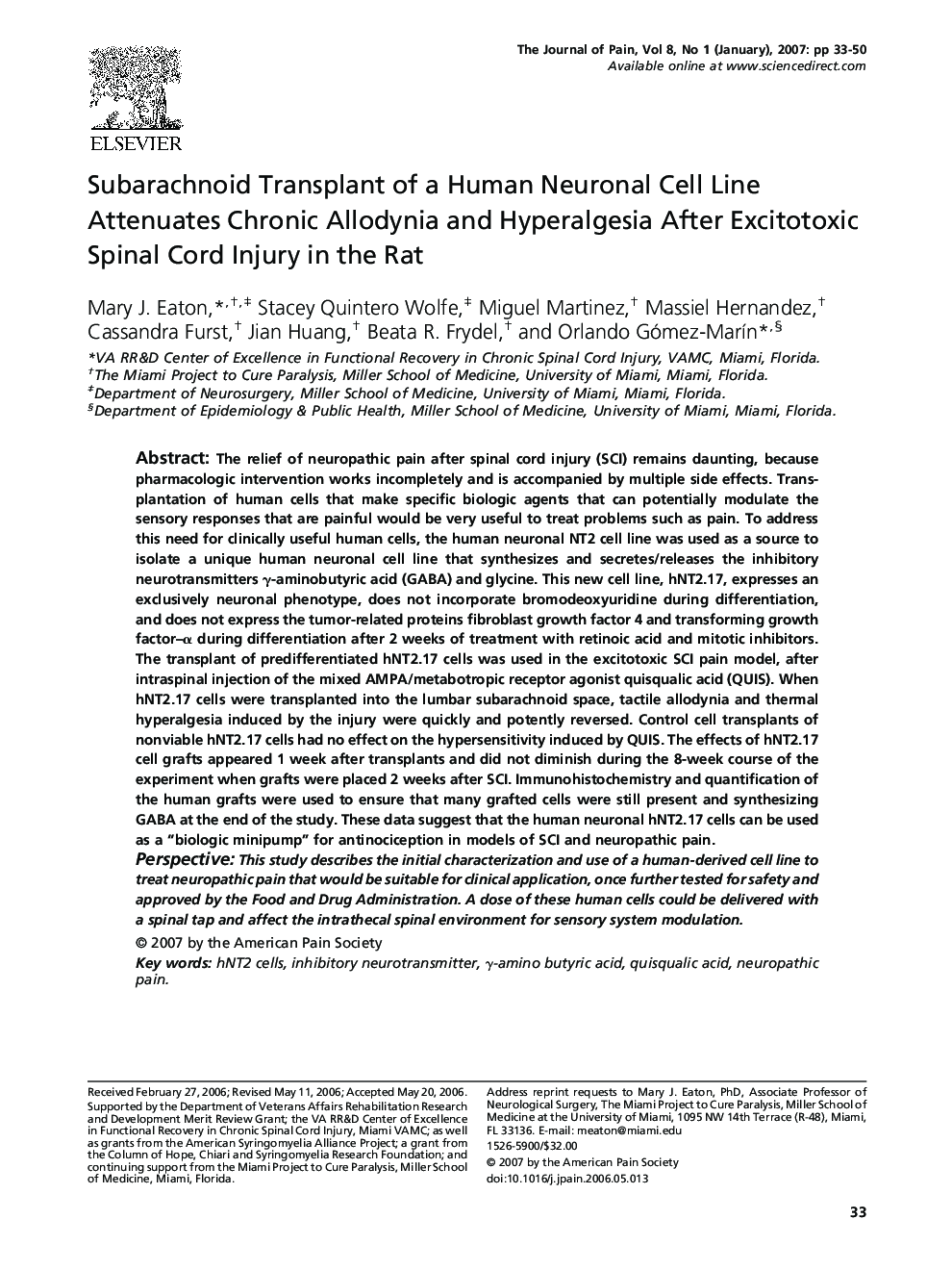| Article ID | Journal | Published Year | Pages | File Type |
|---|---|---|---|---|
| 2729652 | The Journal of Pain | 2007 | 18 Pages |
The relief of neuropathic pain after spinal cord injury (SCI) remains daunting, because pharmacologic intervention works incompletely and is accompanied by multiple side effects. Transplantation of human cells that make specific biologic agents that can potentially modulate the sensory responses that are painful would be very useful to treat problems such as pain. To address this need for clinically useful human cells, the human neuronal NT2 cell line was used as a source to isolate a unique human neuronal cell line that synthesizes and secretes/releases the inhibitory neurotransmitters γ-aminobutyric acid (GABA) and glycine. This new cell line, hNT2.17, expresses an exclusively neuronal phenotype, does not incorporate bromodeoxyuridine during differentiation, and does not express the tumor-related proteins fibroblast growth factor 4 and transforming growth factor–α during differentiation after 2 weeks of treatment with retinoic acid and mitotic inhibitors. The transplant of predifferentiated hNT2.17 cells was used in the excitotoxic SCI pain model, after intraspinal injection of the mixed AMPA/metabotropic receptor agonist quisqualic acid (QUIS). When hNT2.17 cells were transplanted into the lumbar subarachnoid space, tactile allodynia and thermal hyperalgesia induced by the injury were quickly and potently reversed. Control cell transplants of nonviable hNT2.17 cells had no effect on the hypersensitivity induced by QUIS. The effects of hNT2.17 cell grafts appeared 1 week after transplants and did not diminish during the 8-week course of the experiment when grafts were placed 2 weeks after SCI. Immunohistochemistry and quantification of the human grafts were used to ensure that many grafted cells were still present and synthesizing GABA at the end of the study. These data suggest that the human neuronal hNT2.17 cells can be used as a “biologic minipump” for antinociception in models of SCI and neuropathic pain.PerspectiveThis study describes the initial characterization and use of a human-derived cell line to treat neuropathic pain that would be suitable for clinical application, once further tested for safety and approved by the Food and Drug Administration. A dose of these human cells could be delivered with a spinal tap and affect the intrathecal spinal environment for sensory system modulation.
